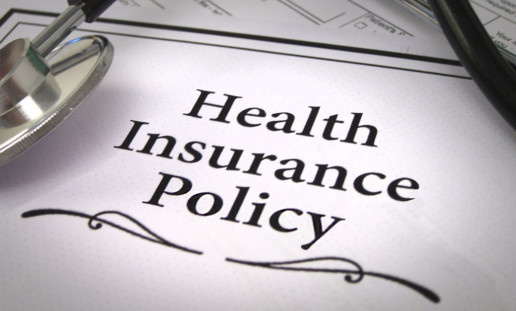The approaching ACA premium tax moratorium – take 2
In 2010, Congress scheduled the 2014 Affordable Care Act premium tax. Then in 2015 Congress introduced a one-year moratorium on the premium tax that would take place in 2017. This past January, Congress placed another moratorium for the ACA premium tax in 2019. Continue reading to learn more.
In 2010, Congress scheduled the 2014 introduction of the Affordable Care Act premium tax (aka the health insurer fee). Then, via the PACE Act of October 2015, Congress placed a one-year moratorium on this 4% or so premium tax for calendar year 2017. You might recall our ensuing discussion a couple of years ago about how employers sponsoring fully insured medical, dental and/or vision plans could leverage this 2017 moratorium to their advantage.
See also: ACA: 4 things employers should focus on this fall
Meanwhile, did you notice back in January that Congress placed another moratorium on this tax, this time for 2019? To review:
- 2014-2016 – Tax applies
- 2017 – Under moratorium
- 2018 – Tax applies
- 2019 – Under moratorium
- 2020 – Tax scheduled to return
Fortunately, in moratorium years, fully insured medical, dental and vision premiums should be about 4% lower than they would have been otherwise, with these savings passed along proportionately by most employers to their plan participants.
Unfortunately, the budgetary challenge of this on-again-off-again Congressional approach is that when the tax returns, fully insured renewals naturally go up about 4% more than they would have otherwise. For example, an 8% premium increase becomes 12%.
See also: Proposals for Insurance Options That Don’t Comply with ACA Rules: Trade-offs In Cost and Regulation
Another complication occurs as employers annually compare the expected and maximum costs of self-funding their plans versus fully insuring the plans. Because this tax generally does not apply to self-funded plans, in “tax applies” years, any expected savings from self-funding will show about 4% higher than in moratorium years. This math especially complicates the financial comparison of level funding contracts to fully insured contracts (almost all level funding products are self-funded contracts).
With the Jan. 1 fully insured medical, dental and vision renewals beginning to cross our desks, what should employers do?
First, they should review the renewal’s rating methodology page and ensure that this tax was not included in the proposed 2019 premiums. If the rating methodology page was not provided, request it. If this request fails, ask for written confirmation that this tax is not included in your plan’s 2019 premiums.
Second, when comparing 2019 expected and maximum mature self-funded plan costs to 2019 fully insured premiums, extend the analysis to 2020 and project what will happen when this 4% fully insured tax tide returns.
See also: Pre-existing Conditions and Medical Underwriting in the Individual Insurance Market Prior to the ACA
Finally, complicating matters, several states, including Maryland, introduced new or higher state premium taxes for 2019. Ask your benefits consultant if these actions will impact your plans. For Maryland employers sponsoring fully insured plans, for example, the new additional one-year premium tax will essentially cancel out the 2019 ACA premium tax moratorium.
SOURCE: Pace, Z (27 September 2018) "The approaching ACA premium tax moratorium – take 2" (Web Blog Post). Retrieved from https://www.benefitnews.com/opinion/the-approaching-obamacare-premium-tax-moratorium?brief=00000152-14a5-d1cc-a5fa-7cff48fe0001
ACA: 4 things employers should focus on this fall
Yes, employers still need to worry about the Affordable Care Act and its many rules and regulations. Read this blog post for more information.
During the coming months, employers may have questions about whether they still need to worry about the Affordable Care Act (ACA). The answer is yes; the ACA is alive and well, despite renewed legal challenges and the elimination of the individual mandate beginning next year.
While the Tax Cuts and Jobs Act reduced the tax penalty for individuals who don’t have health coverage to $0, effective for 2019, employers are still subject to penalties for failing to comply with certain ACA rules. For example, the IRS is currently enforcing “employer shared responsibility payments” (ESRP) penalties against large employers who fail to meet the ACA requirements to offer qualifying health coverage to their full-time employees. For this purpose, large employers are those with 50 or more full-time or full-time equivalent employees. Here are four things about the ACA that employers should focus on now to avoid significant financial liabilities.
1. The IRS is currently assessing penalties using 226-J letters
In 2017, the IRS began assessing ESRP penalties against large employers that failed to offer qualifying health coverage to at least 95 percent of their full-time employees. An ESRP penalty assessment comes in the form of a 226-J letter, which explains that the employer may be liable for the penalty, based on information obtained by the IRS from Forms 1095-C filed by the employer for that coverage year, and tax returns filed by the employer’s employees. The employer has only 30 days to respond to the 226-J letter, using IRS Form 14764, which is enclosed with the 226-J letter. The employer must complete and return IRS Form 14765 to challenge any part of the assessment.
The short timeframe for responding to a 226-J letter means that staff who are likely to be the first to receive communications from the IRS should have a plan in place to react quickly. Training for staff should include information about who to notify and what documentation to keep readily available to support an appeal. Not responding to the IRS 226-J letter will result in a final assessment of the proposed penalty. These penalties can be significant. In the worst case, an employer with inadequate health coverage could pay for the cost of the coverage, as well as penalties of $2,000/year (as indexed) for every full time employee (less 30), even those who received health coverage from the employer.
Depending on the employer’s response to the initial assessment, the IRS will then send the employer one of four types of 227 acknowledgment letters. If the employer disputes the penalty, the IRS could accept the employer’s explanation and reduce the penalty to $0 (a 227-K letter). But if the IRS rejects any part of the employer’s response, the employer will receive either a 227-L letter, with a lower penalty amount, or a 227-M letter, a notice that the amount of the initial assessment hasn’t changed. These letters will explain steps the employer has to take to continue disputing the assessment, including applicable deadlines. The next phase of the appeal might include requesting a telephone conference or meeting with an IRS supervisor, or requesting a hearing with the IRS Office of Appeals.
2. ACA reporting requirements and penalties still apply
Along with the ESRP penalties, the Form 1094-C and 1095-C reporting requirements still apply to large employers. The IRS uses information on Forms 1095-C in applying the ESRP rules and deciding whether to assess penalties against the reporting employer. Large employers must file Forms 1095-C every year with the IRS and send them to full-time employees in order to document compliance with the ACA requirement to offer qualified, affordable coverage to at least 95 percent of full-time employees. Technically, the forms are due to employees by January 31, and to the IRS by March 31, each year, to report compliance for the prior year. In the past, the IRS has extended the deadline for providing the forms to employees, but not the deadline for filing with the IRS.
Penalties can apply if an employer fails to file with the IRS or provide the forms to employees, and the penalty amount can be doubled if the IRS determines that the employer intentionally disregarded the filing requirement. These penalties can apply if an employer fails to file or provide the forms at all, files and provides the forms late, or if the forms are timely filed and provided, but are incorrect or incomplete.
In some instances, the IRS has assessed ESRP penalties based on Form 1095-C reporting errors. So, in addition to the reporting-related penalties, inaccurate information on Forms 1095-C can lead to erroneous ESRP assessments that the employer will then need to refute, using the IRS forms and procedures described above.
Employers should carefully monitor their ACA filings and reports, and consider correcting prior forms if errors are discovered. Employers should also continue tracking offers of coverage made for each month of 2018, to prepare for compliance with the Form 1095-C reporting requirement early in 2019.
3. “Summary of Benefits and Coverage” disclosure forms are still required
The ACA added a new disclosure requirement for group health plans, called a “Summary of Benefits and Coverage” or “SBC,” that’s intended to help employees make an “apples to apples” comparison of different benefit plan features, such as deductibles, out-of-pocket maximums, and copayments for various benefits and services. This requirement still applies, and SBCs must be provided during open enrollment, upon an employee’s initial eligibility for coverage under the plan, and in response to a request from an employee. The template SBC form and instructions for completing it were updated for coverage periods starting after April 1, 2017. For 2018, a penalty of $1,128 per participant can apply to the failure to provide an SBC as required.
4. The “Cadillac Tax” has not been repealed
The ACA’s so-called Cadillac tax — an annual excise tax on high-cost health coverage — was initially scheduled to take effect in 2018. The Cadillac tax has been repeatedly delayed, and the federal budget bill passed in January delayed it again through December 31, 2021. Despite the repeated delays, the Cadillac tax has not been repealed and is currently scheduled to apply to health coverage offered on or after January 1, 2022. This might be an issue to consider for employers who are negotiating collective bargaining agreements in 2018 that include terms for health benefits extending beyond 2021.
While uncertainty continues to surround the ACA, employers should remain aware of continuing compliance requirements to avoid the potentially significant penalties that remain in effect under the ACA.
Boyette, J; Masson, L (21 August 2018) "ACA: 4 things employers should focus on this fall" (Web Blog Post). Retrieved from https://www.benefitspro.com/2018/08/21/aca-4-things-employers-should-focus-on-this-fall/
12 Ways to Save on Health Care
Managing your money is tough, saving for your health care is pretty rough too. These tips and tricks will assist you in managing your medical finances for the future.
We all know paying for health care is a challenge, with or without insurance, amid rising copays, deductibles, and premiums. But there are ways to hold down the costs that can come in handy now, but also as the Affordable Care Act undergoes whatever transformation (or replacement) the Trump administration comes up with.
The Huffington Post reports that, despite the numerous obstacles to cutting costs on health care for individuals —insured or not — there are also numerous ways to do just that, whether it takes due diligence on the patient’s part or having conversations with doctors, hospitals and insurers — even drug companies — about price.
While such tactics may not exactly amount to haggling, negotiating skills can’t hurt, and determination and perseverance are definite assets when it comes to finding the best prices or convincing medical entities to give you a better deal.
Plenty of other sources have good suggestions for slicing medical expenses, whether for prescription drugs, doctor and dentist visits, or hospital care. In fact,
Here’s a look at 12 strategies and suggestions that can end up saving you beaucoup bucks for care and treatment.
12. Check the internet
You would be amazed at how many tips there are online to help you cut the cost of getting — or staying — healthy.
One of the first things you should do is to check out the internet, where you’ll find not just help from the Huffington Post but also from such prominent sources as Kiplinger, Investopedia, Money, CBS and other news stations — and checking them out can have the advantage of providing you with any new suggestions arising out of changes in the law or in the medical field itself. And definitely compare prices on the Internet for procedures and prescriptions before you do anything else.
11. Skip insurance on your prescriptions
Not all the time, and not everywhere, but you could end up getting your prescriptions filled for less money if you don’t go through your medical insurance.
Costco, Walmart, and other retailers with pharmacies often offer cut-to-the-bone prices on generics, some prescription drugs and large orders (say, a 90-day supply of something you take over an extended period). Costco will even provide home delivery, and fill your pets’ prescriptions, too.
Then there are coupons. GoodRx will compare prices for you, provide free coupons you can print out and take to the pharmacy and save, as the website says, up to 80 percent — without charging a membership fee or requiring a sign-up.
10. Talk to your doctor
And ask for samples and coupons. Especially if you’ve never taken a particular drug before, let your doctor know you want to try out a sample lest you have an adverse reaction to the medication and get stuck with 99 percent of your prescription unusable.
Pharmaceutical reps, of course, provide doctors with samples, but they often give them coupons, too, lest you suffer sticker shock in the pharmacy and walk away without filling the prescription. So ask for those too. Doctors can be more proactive about samples than coupons, but remember to ask for both. After all, it’s your money.
9. Talk directly to the drug companies
So you’ve tried to get a brand-name drug cheaper, but coupons don’t help enough and there’s no generic available (or you react badly to it). Don’t stop there; go directly to the source and ask about assistance programs the pharmaceutical company may offer.
Such programs can be need-based, but not always — sometimes it’s a matter of filling out a little paperwork to get a better deal. The Huffington Post points out dialysis drug Renvela can go for several hundred dollars, but drops to $5 a month if the patient completes a simple form.
8. Haggle
Before you go in for a procedure (assuming it’s voluntary), or when the bills start to come in, talk to both the doctors (is there ever only one?) and the hospital and ask for a discount — or a reduction in your bill for paying in cash or for paying the whole amount. Be polite, but stand your ground and negotiate for all you’re worth.
A CBS report cites Consumer Reports as having found that only 31 percent of Americans haggle with doctors over medical bills but that 93 percent of those who did were successful — with more than a third of those saving more than $100. Just make sure you’re talking with the right person in the office — the one who actually has the authority to issue those discounts. And get it in writing.
7. What about an HMO?
If you’re not devoted to your doctor, opting for an HMO can save you money — although it will limit your choices of doctors and hospitals. Still, coverage should be cheaper.
If you’re generally in good health, choosing a plan — HMO or not — that restricts your choices of doctors and hospitals can save you money. And having the flexibility to go see the top specialist in his field won’t necessarily be your top priority unless you have specific health conditions for which you really need specialized care. In that case, you might prefer to hang on to your right of choice, despite the expense.
6. Ask for estimates
Yes, just the way you would from your mechanic or plumber. Ask the doctor/hospital/etc. what the charge is for whatever it is you’re having done, whether it’s a hip replacement or a deviated septum. You will already have checked out the costs for these things on the Internet, of course, so that you have an idea of standard pricing — and if your doctor, etc. comes in substantially higher, look elsewhere.
And while you’re at it, ask whether the doctor uses balance billing. If so, run, do not walk, in the opposite direction and find a doctor who doesn’t. Otherwise, particularly if the doctor’s fees are high, you’ll find yourself paying the balance of his whole bill once the insurance company kicks in its share.
Normally the doctor and insurer reach an agreement that eliminates whatever is left over after you pay your share and the insurer pays its share. But with balance billing, whatever is left over becomes your responsibility — and you’ll be sorry, maybe even bankrupt. By the way, balance billing is actually illegal in some states under some circumstances, so check before you pay.
5. Network, network, network
Always, always ask if the doctor is in network, and if the lab where your blood work goes and the specialist he recommends and the emergency room doctor and surgeon are also in network. Of course you can’t do this if it’s a true emergency, but if you learn after the fact that you were treated by out-of-network doctors at an in-network hospital, see whether your state has any laws against, or limits on, how much those out-of-network practitioners can charge you.
According to a Kaiser Family Foundation study, close to 70 percent of with unaffordable out-of-network medical bills were not aware that the practitioner treating them was not in their plan’s network at the time they received care.
4. Check your bill with a fine-toothed comb
Not only should you check to see whether your bill is accurate, you should also read up on medical terminology so you know whether you’re being billed for medications and procedures you actually received.
Not only do billing offices often mess up — a NerdWallet study found that 49 percent of Medicare medical claims contain medical billing errors, which results in a 26.4 percent overpayment for the care provided, but they can also get a little creative, such as billing for individual parts of a course of treatment that ought to be billed as a single charge. It adds up. And then there are coding errors, which can misclassify one treatment as another and up the charge by thousands of dollars.
3. Get a health care advocate
If you just can’t face fighting insurers or doctors’ offices, or aren’t well enough to fight your own battles, consider calling in a local professional health care advocate. They’ll know what’s correct, be able to spot errors, and can negotiate on your behalf to contest charges or lower bills.
For that matter, if you call them in ahead of time for a planned procedure or course of treatment, they can advise you about care options in your area and maybe forestall a lot of problems.
2. Go for free, not broke
Lots of places offer free flu shots and screenings for things like blood pressure and cholesterol levels — everyplace from drugstores to shopping centers, and maybe even your place of work.
Senior centers do too, but if you can’t find anything locally check out places like Costco and Sam’s Club, which do screenings for $15; that might even be cheaper than your copay at the doctor’s office.
1. Deals can make you smile
Whether you have dental insurance or not, it doesn’t cover much. So go back to #8 (Haggle) to negotiate cash prices with your dentist for major procedures, and take advantage of Living Social or Groupon vouchers to get your routine cleanings and exams with X-rays. The prices, says HuffPost, “range from $19 to $50 and are generally offered by dentists hoping to grow their practices.”
SOURCE:
Satter, M (2 June 2018) "12 ways to save on health care" [Web Blog Post]. Retrieved from https://www.benefitspro.com/2017/02/07/12-ways-to-save-on-health-care?t=Consumer-Driven&page=6
Employer Responsibility Under the Affordable Care Act
Here's a helpful chart from the Kaiser Family Foundation to decipher the penalties employers may have for not offering ACA coverage in 2018.
The Affordable Care Act does not require businesses to provide health benefits to their workers, but applicable large employers may face penalties if they don’t make affordable coverage available. The employer shared responsibility provision of the Affordable Care Act penalizes employers who either do not offer coverage or do not offer coverage that meets minimum value and affordability standards. These penalties apply to firms with 50 or more full-time equivalent employees. This flowchart illustrates how those employer responsibilities work.
Read the article.
Source:
Kaiser Family Foundation (5 March 2018). "Employer Responsibility Under the Affordable Care Act" [Web Blog Post]. Retrieved from address https://www.kff.org/infographic/employer-responsibility-under-the-affordable-care-act/
Despite Compressed Sign-Up Period, ACA Enrollment Nearly Matches Last Year’s
President Trump decided to take away ACA, but that didn’t stop people from signing up. Read this article for the shocking numbers of enrollment.
A day after President Donald Trump said the Affordable Care Act “has been repealed,” officials reported that 8.8 million Americans have signed up for coverage on the federal insurance exchange in 2018 — nearly reaching 2017’s number in half the sign-up time.
That total is far from complete. Enrollment is still open in parts of seven states, including Florida and Texas, that use the federal healthcare.gov exchange but were affected by hurricanes earlier this year. The numbers released Thursday by the Department of Health and Human Services also did not include those who signed up between midnight Dec. 15 and 3 a.m. ET on Dec. 16, the final deadline for 2018 coverage, as well as those who could not finish enrolling before the deadline and left their phone number for a call back.
And enrollment has not yet closed in 11 states — including California and New York — plus Washington, D.C., that run their own insurance exchanges. Those states are expected to add several million more enrollees.
The robust numbers for sign-ups on the federal exchange — 96 percent of last year’s total — surprised both supporters and opponents of the health law, who almost universally thought the numbers would be lower. Not only was the sign-up period reduced by half, but the Trump administration dramatically cut funding for advertising and enrollment aid. Republicans in Congress spent much of the year trying to repeal and replace the law, while Trump repeatedly declared the health law dead, leading to widespread confusion.
On the other hand, a Trump decision aimed at hurting the exchanges may have backfired. When he canceled federal subsidies to help insurers offer discounts to their lowest-income customers, it produced some surprising bargains for those who qualify for federal premium help. That may have boosted enrollment.
“Enrollment defied expectations and the Trump administration’s efforts to undermine it,” said Lori Lodes, a former Obama administration health official who joined with other Obama alumni to try to promote enrollment in the absence of federal outreach efforts. “The demand for affordable coverage speaks volumes — proving, yet again, the staying power of the marketplaces.”
“The ACA is not repealed and not going away,” tweeted Andy Slavitt, who oversaw the ACA under President Barack Obama.
The tax bill passed by Congress this week repeals the fines for those who fail to obtain health coverage, but those fines do not go away until 2019. Still, that has added to the confusion for 2018 coverage.
And it remains unclear whether Congress will make another attempt to repeal the law in 2018.
“I think we’ll probably move on to other issues,” Senate Majority Leader Mitch McConnell (R-Ky.) said in an interview Friday with NPR.
Read further.
Source: Rovner J. (21 December 2017). "Despite Compressed Sign-Up Period, ACA Enrollment Nearly Matches Last Year’s" [Web Blog Post]. Retrieved from address https://khn.org/news/despite-compressed-sign-up-period-aca-enrollment-nearly-matches-last-years/view/republish/
WHY IT MATTERS THAT MORE PEOPLE SIGNED UP FOR ACA HEALTH COVERAGE IN 2018
From The ACA Times, let's take a look at ACA Health Coverage in 2018.
It was meant to have the opposite effect.
The Trump administration’s decision to undermine the Affordable Care Act (ACA) by shortening the annual open enrollment period to 45-days and cutting funding to promote open enrollment was predicted to reduce the number of people who might seek insurance coverage for 2018 on HealthCare.gov.
Instead, more than 600,000 people signed up for health insurance under the ACA in the first four days of enrollment. According to Reuters: “The Centers for Medicare & Medicaid Services, a division of the Department of Health and Human Services, said that during the period of Nov. 1 through Nov. 4, 601,462 people, including 137,322 new consumers, selected plans in the 39 states that use the federal website HealthCare.gov.”
Access to healthcare remains top of mind for Americans. For instance, exit polls in Virginia for state elections found healthcareto be the most pressing issue on the minds of voters who elected a Democratic governor in that state. And entrepreneurs and small businesses owners and employees are among those that benefit greatly from having access to healthcare insurance plans through the ACA.
For employers, all this, along with recent guidance from the IRS, points to the ACA continuing strong and the employer mandate being enforced. If you haven’t done so already, now is the time to assess your compliance with the ACA and what data you need to file ACA related forms with the IRS for the 2017 tax year.
Read the original article.
Source:
Sheen R. (20 November 2017). "WHY IT MATTERS THAT MORE PEOPLE SIGNED UP FOR ACA HEALTH COVERAGE IN 2018" [Web blog post]. Retrieved from address https://acatimes.com/why-it-matters-that-more-people-signed-up-for-aca-health-coverage-in-2018/
FREE ACA RESOURCES FOR SMALL BUSINESSES
From The ACA Times, we've pulled this article that lists out some helpful resources for small businesses.
The federal government provides free online resources to help small businesses better understand the requirements of the Affordable Care Act (ACA) and how they might be able to offer health insurance to their employees. Here are some we thought might be helpful.
How the Affordable Care Act affects small businesses: This web page hosted by HealthCare.gov explains how the ACA can impact a small business with 1 to 50 full-time equivalent employees.
SHOP Guide: This web page on Healthcare.gov provides information for small businesses on how they can offer a Small Business Health Options Program (SHOP) insurance to their employees. The web page has links to help businesses learn more about SHOP and whether they qualify to offer such coverage to employees.
The Small Business Health Care Tax Credit: Healthcare.gov, the Taxpayer Advocate Service and the IRS both provide web pages that provide information that helps small businesses determine if they are eligible to take advantage of tax credits if they offer SHOP to their employees.
The Future of SHOP: The Centers for Medicare and Medicaid Services (CMS) is providing information on how CMS will be exploring a more efficient implementation of the Federally-facilitated SHOP Marketplaces in order to promote insurance company and agent/broker participation and make it easier for small employers to offer SHOP plans to their employees, while maintaining access to the Small Business Health Care Tax Credit.
Read the original article here.
Source:
Sheen R. (21 November 2017). "FREE ACA RESOURCES FOR SMALL BUSINESSES" [Web blog post]. Retrieved from address https://acatimes.com/free-aca-resources-for-small-businesses/
IRS to reject returns lacking health coverage disclosure
Where does the IRS stand on ACA (Affordable Care Act)? It's time to know. Check out this article from Benefits Pro for more information.
The Internal Revenue Service has announced that for the first time, tax returns filed electronically in 2018 will be rejected if they do not contain the information about whether the filer has coverage, including whether the filer is exempt from the individual mandate or will pay the tax penalty imposed by the law on those who don’t buy coverage.
Tax returns filed on paper could have processing suspended and thus any possible refund delayed.
The New York Times reports that the IRS appears to be acting in contradiction to the first executive order issued by the Trump White House on inauguration day, in which Trump instructed agencies to “scale back” enforcement of regulations governing the ACA.
The move by the IRS reminds people that they can’t just ignore the ACA, despite the EO. Although only those lacking coverage have to pay the penalty, everyone has to indicate their insurance coverage status on their filing.
While the uninsured rate for all Americans dipped to a historic low of 8.6 percent in the first three months...5 states with lowest, highest uninsured rates
According to legal experts cited in the report, the IRS is indicating that although the administration may have leeway in how aggressively it enforces the mandate provision, it’s still in effect unless and until Congress specifically repeals it.
While many people thought they didn’t have to bother with reporting, and many insurers have raised rates anticipating that the lack of a mandate would lead to lower enrollments and higher costs for them, that’s not the case. Initially the IRS did not reject returns because the law was new.
The penalty is pretty steep; for those who don’t have coverage, it can range from $695 for an individual to a maximum of $2,085 for a family or 2.5 percent of AGI, whichever is higher. Not everyone without coverage would be penalized, though; if their income is too low or if the lowest-priced coverage costs more than 8.16 percent of their income, they’ll avoid the penalty.
That said, it’s not known how stringently the IRS will be in enforcing the mandate. But at least taxpayers will know whether they’re exempt from the penalty or whether they’re obligated to buy coverage.
4 Main Impacts of Yesterday's Executive Order
Yesterday, President Trump used his pen to set his sights on healthcare having completed the signing of an executive order after Congress failed to repeal ObamaCare.
Here’s a quick dig into some of what this order means and who might be impacted from yesterday's signing.
A Focus On Small Businesses
The executive order eases rules on small businesses banding together to buy health insurance, through what are known as association health plans, and lifts limits on short-term health insurance plans, according to an administration source. This includes directing the Department of Labor to "modernize" rules to allow small employers to create association health plans, the source said. Small businesses will be able to band together if they are within the same state, in the same "line of business," or are in the same trade association.
Skinny Plans
The executive order expands the availability of short-term insurance policies, which offer limited benefits meant as a bridge for people between jobs or young adults no longer eligible for their parents’ health plans. This extends the limited three-month rule under the Obama administration to now nearly a year.
Pretax Dollars
This executive order also targets widening employers’ ability to use pretax dollars in “health reimbursement arrangements”, such as HSAs and HRAs, to help workers pay for any medical expenses, not just for health policies that meet ACA rules. This is a complete reversal of the original provisions of the Obama policy.
Research and Get Creative
The executive order additionally seeks to lead a federal study on ways to limit consolidation within the insurance and hospital industries, looking for new and creative ways to increase competition and choice in health care to improve quality and lower cost.
5 tips to make this the best open enrollment ever
Open enrollment season is right around the corner. Did you know that most people find open enrollment season more burdensome than tax season? As employers begin engaging their employees on healthcare offerings, check out these great tips by Kim Buckey from Benefits Pro on how you can make this year the best open enrollment yet.
Learn from last year’s enrollment
Look back on how your company fared during last year’s open enrollment period.
What were the most time-consuming tasks, and how can they be streamlined this year? What were the top questions asked by employees? Did you achieve your enrollment goals?
Hold a meeting with key internal and external stakeholders on the team and review what worked and what didn’t work last year. Knowing where you are, what your challenges are and will be, and where you’re on the right track will enable you to create a meaningful plan for this year.
Start with strategy
Once you know where you are, figure out where you want to be, how you’re going to get there, and how you’ll determine if you’ve achieved your goals. Make sure your strategy includes:
- An assessment of all of your audiences. Remember, you’re not just communicating to employees, you’re reaching out to family members and to managers as well. Keep in mind that not every audience member has the same education level or understanding of even the most basic benefits concepts.
- What’s changing. Are you adding or eliminating plans? Is cost-sharing changing? Is there a new vendor? Having a thorough understanding of what’s changing will help determine what your messaging should be.
- Defining your corporate objectives. Are you looking to increase participation in a particular plan option, or shift a percentage of your population to a new plan offering? Increase participation in a wellness plan? What percentage? Define your objectives and how you plan on measuring success.
- Your overall messages — and any specific messages targeted to your audiences. You may communicate differently to people already in the plan in which you want to increase participation, for example.
- A schedule. People need to hear messages multiple times before they “register.” Make sure you’re communicating regularly — and thoughtfully — in the weeks leading up to, and during, the enrollment period.
- Media. What messages will you deliver in print (newsletters, posters, postcards, enrollment guides)? What should be communicated in person, through managers or one-on-one enrollment support?
Make this year’s enrollment more active
Eighty percent of Americans spend less than an hour researching benefit options, and 90 percent keep the same plan from year to year. Yet for most employees, their circumstances change annually — whether it be the number of their dependents, their overall health and health care usage or their pay.
Active enrollment — where an employee must proactively choose a plan or go without coverage — can be an important step in getting employees more engaged in their benefits.
Active enrollment has benefits for the employer as well — it provides an opportunity to collect key data (such as current dependent information) and to direct employees to the most cost-effective plans for them.
But helping employees choose the “right” plan requires a robust communication plan, combining basic information about plan options, decision-making tools that address the total cost of coverage (both premium and point-of-service costs) and even one-one-one enrollment support.
Many employees don’t have the information they need to make good decisions, and aren’t likely to seek it out on their own — it must be ‘pushed’ to them.
Take demographics into consideration
When engaging employees around their benefits options, consider the wants, needs, and communication preferences of each demographic. Employees just starting their careers are the most underinsured (and generally least informed) group, often seeing student debt rather than health coverage as a more pressing priority.
A Harris/Accolade poll reveals that when results are broken out by age cohort, workers under 30 are having the greatest difficulty finding their way through the healthcare labyrinth.
Only 56 percent say they are comfortable doing so, compared to 76 percent of retirees. They also report more challenges in making the best care decisions, including understanding cost, coordinating care, choosing and understanding benefits, and finding a doctor they can relate to.
Understand the limitations of decision support tools
Decision support tools enable people to take an active role in managing their health care. While they can certainly help, remember that employees must seek them out and use them, and these tools often assume a level of benefits knowledge your employees might not have.
And, these tools recently have come under scrutiny for their ultimate lack of measurable results. To see the return on investment and value, you must also provide education and communications to provide some context for, and drive usage of, these tools.
By applying these five steps along with setting your team up with designated roles, responsibilities, and deadlines, you’re well on your way toward a more seamless, efficient and effective open enrollment period and to saving both your organization and your coworkers time and money.
But remember, benefits communication isn’t “one and done” at enrollment. You’ll need a year-round plan to help employees make good decisions about their care once they’ve chosen their coverage.
See the original article Here.
Source:
Buckey K. (2017 Aug 25). 5 tips to make this the best open enrollment ever [Web blog post]. Retrieved from address https://www.benefitspro.com/2017/08/25/5-tips-to-make-this-the-best-open-enrollment-ever?page_all=1











